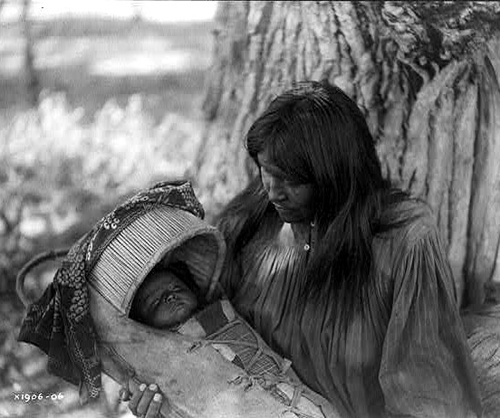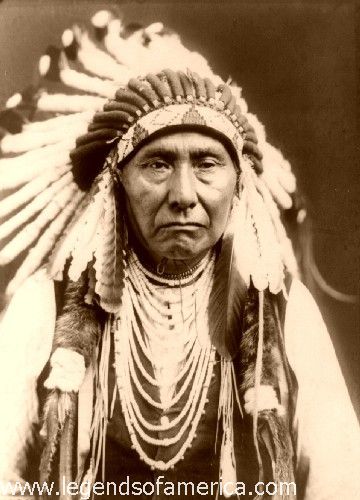The following is my annotated bibliography documenting all research, data, opinions, or ideas used in the creation of this blog.
Resources:
"Native American Legends: Native American Timeline of Events" provided by LegendsofAmerica.com. (2003-2007). 13 July 2007. The following is a very comprehensive timeline highlighting events throughout American history regarding Native Americans. http://www.legendsofamerica.com/NA-Timeline.html
“Indigenous Peoples’ Literature: Native American.” Indians.org. (2006). 13 July 2007. This is an entire archive of Native American information that seeks to educate about the Native Americans. This was useful in collecting the starting information for my research and helped me better understand some of the more complicated tribes, such as the Iroquois Confederation. http://www.indians.org/articles/native-american.html
Almeida, Deirdre A. "Countering Prejudice against American Indians and Alaska Natives through Antibias Curriculum and Instruction." ERIC Digest (ERIC Clearinghouse on Rural Education and Small Schools Charleston WV.) (1996). 12 July 2007. The following is an article arguing for the implementation of the teaching of an antibias curriculum regarding Native Americans and Alaskan Natives. http://www.ericdigests.org/1997-2/antibias.htm
Barney, David D. “Risk and Protective Factors for Depression and Health Outcomes in American Indian and Alaska Native Adolescents.” Wicazo Sa Review, Vol. 16, No. 1, Native American Health in the 21st Century. (Spring, 2001), pp. 135-150. 12 July 2007. A study conducted to identify and document the psychological and physical damage done to modern day Native American and Alaskan Native adolescents by current and past prejudice. http://links.jstor.org/sici?sici=0749-6427%28200121%2916%3A1%3C135%3ARAPFFD%3E2.0.CO%3B2-M
California Secretary of State. “Analysis by the Legislative Analyst: Proposition 68.” Offical Voter Information Guide. California General Election. November 2004. 13 July 2007. This is the analysis by the Legislative Analyst of Proposition 68 and makes the language of proposition less confusing. http://vote2004.sos.ca.gov/voterguide/propositions/prop68-analysis.htm
California Secretary of State. “Text of Proposed Laws: Proposition 68.” Offical Voter Information Guide. California General Election. November 2004. 13 July 2007. This is the actual text of the proposed law entitled “The Gaming Revenue Act of 2004” which would have required the Native American nations in California to pay an exuberant amount of their profits to our state and local government. http://vote2004.sos.ca.gov/voterguide/propositions/prop68text.pdf
Castillo, Professor Edward D. “Short Overview of California Indian History.” California Native American Heritage Commission. (1998). 13 July 2007. An extremely detailed description of the Native American people detailing the prejudice and persecution of their people in California history since the Spaniards and ending with near modern day afflictions. http://www.ceres.ca.gov/nahc/califindian.html
Kelly, William H. “The Economic Basis of Indian Life.” Annals of the American Academy of Political and Social Science, Vol. 311, American Indians and American Life. (May 1957), pp. 71-79. 13 July 2007. This site identifies the problem of poverty on reservations and describes how the Native Americans are attempting to solve these economic problems by leaving the reservations or turning to off-reservation work to supplement their income from the reservation while refusing to leave their homes on the reservation. http://links.jstor.org/sici?sici=0002-7162%28195705%29311%3C71%3ATEBOIL%3E2.0.CO%3B2-7
Library of Congress. “Primary Documents in American History: Indian Removal Act” Library of Congress. (2007) 13 June 2007. An analysis of the Indian Removal Act of 1830. This proved quiet helpful in understanding the Act in its actual language and well as identifying its ramifications. http://www.loc.gov/rr/program/bib/ourdocs/Indian.html
Paisano, Edna L. “The American Indian, Eskimo, and Aleut Population.” U.S. Census Bureau, Population Division and Housing and Household Economic Statistics Division. (2001) 13 July 2007. This is an economic analysis of the 1990 Census regarding the Native Americans, the Native Alaskans, and the Aleut people. Specifically, it provided for me the poverty levels of the Native American people and the trends of previous census with regards to the Native Americans. http://www.census.gov/population/www/pop-profile/amerind.html
Riding In, James. “Repatriation: A Pawnee's Perspective.” American Indian Quarterly, Vol. 20, No. 2, Special Issue: Repatriation: An Interdisciplinary Dialogue. (Spring, 1996), pp. 238-250. 12 July 2007. This is an article discussing the robbing of Native American graves by archaeologists claiming scientific advancement as justification for religious suppression of a sovereign nation. http://links.jstor.org/sici?sici=0095-182X%28199621%2920%3A2%3C238%3ARAPP%3E2.0.CO%3B2-7
Thornton, Russell. “Cherokee Population Losses during the Trail of Tears: A New Perspective and a New Estimate.” Ethnohistory, Vol. 31, No. 4. (Autumn, 1984), pp. 289-300. 13 July 2007. This is an analysis of the estimated death tolls and a brief history of the Trail of Tears. It discusses the types of diseases the Cherokee and other emigrating Indian tribes suffered from while on the journey. http://links.jstor.org/sici?sici=0014-1801%28198423%2931%3A4%3C289%3ACPLDTT%3E2.0.CO%3B2-3
Twenty-First U.S. Congress, First Session. “A Century of Lawmaking for a New Nation: U.S. Congressional Documents and Debates, 1774-1875.” Library of Congress. (2007) 13 June 2007. This is the actual text of the Indian Removal Act of 1830. With a little probing you can actually see the prejudice of law makers at that time and the loop holes they intentionally wove into the document. http://memory.loc.gov/cgi-bin/ampage?collId=llsl&fileName=004/llsl004.db&recNum=458
Vinje, David L. “Native American Economic Development on Selected Reservations: A Comparative Analysis.” American Journal of Economics and Sociology. Vol. 55, No. 4. (Oct., 1996), pp. 427-442. 13 July 2007. This article describes how the affects of Native American Gaming have the potential to “help reduce Indian Reservations’ high rates of family poverty.” It lists the pros and cons identifying possible fallback plans should this alternative to poverty prove to unsuccessfully make it past the federal government. http://links.jstor.org/sici?sici=0002-9246%28199610%2955%3A4%3C427%3ANAEDOS%3E2.0.CO%3B2-Z
Pictures:
"Apache Mother and Baby" provided by the Library of Congress. 13 June 2007. This is a gorgeous picture of a young Apache woman with her baby. You can actually see the harsh years carved into her face. http://www.legendsofamerica.com/photos-nativeamerican/ApacheMother.jpg
"Chief Joseph: Nez Perce" provided by the Library of Congress. 13 June 2007. This is the picture I have chosen to represent me because I love the fact that a Native American had the courage to speak to the American people in Lincoln’s Hall in his own language discussing the prejudice of the Native Americans by the US citizens. http://www.legendsofamerica.com/photos-nativeamerican/ChiefJoseph5-500.jpg
“Ogalala Sioux at an oasis in the Badlands" provided by the Library of Congress. 13 July 2007. This is a breath taking picture of a Ogalala Sioux Indian on a reservation called the Badlands. These plots of land were meant to be the worst land in order to provide the best and most profitable lands to whites. http://www.legendsofamerica.com/photos-nativeamerican/OgalaSiouxRedHawkBadlands.jpg
“Trail of Tears” provided by HistoricalDocuments.com. 13 July 2007. This is a picture symbolizing the horrible “Trail of Tears,” a journey made by Native Americans forced to leave their lands by the Indian Removal Act of 1830 in which thousands are reported to have died throughout the journey. http://www.historicaldocuments.com/TrailofTears1.jpg
Quotes:
Chief Joseph. "We only ask an even change to live as other men live. We ask to be recognized as men." Voices of Freedom: A Documentary History. (Vol. 2) W.W. Norton & Company, Inc. 2005. (Page 27).

